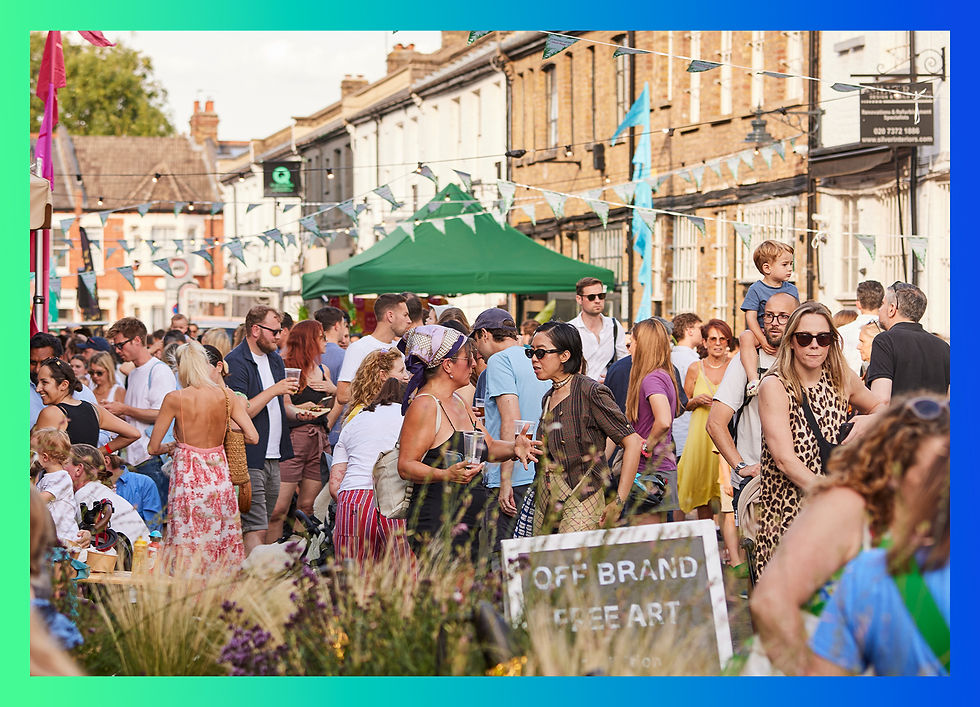Placemaking 2020 - Summer & Beyond
- Kit & Caboodle Ltd
- Mar 10, 2021
- 4 min read

The challenges facing landowners, developers, landlords, tenants and homeowners to adapt their external spaces to comply with lockdown and Covid-19 legislation have been sudden and impactful.
But what next? As we move into summertime and restrictions ease, are there any “easy wins” for all those involved in placemaking? Research has shown how intelligent urban placemaking can impact favourably on health and wellbeing, for individuals and at a community level. There has never been a more vital time to seize the initiative.
Building largely on urban design principles, and working in partnership with communities where appropriate, developers can once again look to offer a choice of installation-based placemaking activations for existing and new sites.
To engage existing and potential user communities appropriately is a win-win. Not only does this add greater value to a specific development, but it also helps meet compliance requirements where community benefit and involvement has been a critical part of obtaining planning permission.
With a focus on ‘feel good’ placemaking across external developmental sites, concepts need to be cost effective, timely, considerate, socially acceptable and sustainable.
In particular, having a finger on the pulse of emergent youth markets, as the Gen Z’ers renew their recognition of the importance of physical connection, post-lockdown all helps with strategic placemaking planning. Understanding the wish of some developers to “put back” in practical terms, whether through charitable partnerships or social projects such as youth clubs and creative community spaces is the engine that can drive us all beyond the “lockdown” mentality. The trick is to create imaginative, light-hearted experiences that will bring people and brands together for memorable moments, fusing consumer passions with brand values … safely.
This could include outdoor exhibitions and performances, for example, where seating is feasible, once the restriction is reduced to 1 metre or dropped altogether. Capitalising on green spaces in urban areas will encourage those who have had the privilege of enjoying their private gardens, or public spaces such as curated parks, to once again benefit from a renewed connection with nature.
K & C’s team welcomed and entertained 5,000 people over an Easter Week installation last year at Battersea Power Station; installed an Instagram sensation with Principal Place ‘Park’ – a greened urban area of topiary fantasy, driving footfall and interest to the latest City of London development, supported community involvement with dance workshops staging a performance of “Thriller” featuring 160 enthusiastic Zombies on Granary Square at Halloween and corralled a talking animatronic camel at a staff summer party for Facebook so that no-one got the hump. From ticketed partner experiences such as The Mad Hatter’s Gin Tea Party in London for almost eight months until lockdown, to re-imagining retail spaces at individual units, or an entire shopping mall in Lisbon – we present a diverse portfolio of experience, coupled with an understanding of trends such as the need to repurpose bricks-and-mortar stores, as they adapt to online consumerism.

Whether you have driven a vintage Ferrari at The Run to Monaco, or reclined beside a fountain at MDL BEAST, the largest staged and digital music festival in the world, held in Riyadh just before Christmas 2019… chances are, you won’t know the movers and shakers behind the scenes, who help make the magic happen.
“Having the freedom to create without limits and give people a completely new and extraordinary environment to experience music, art and culture was extremely exciting. I’m really proud that we were an integral part of the creative concept, design, build and production team for the MDLBEAST VIB (Very Important Beasts) & VVIB Areas, Media / Press, Artist and Hospitality areas having been engaged on the project by Quintessentially Events for their client LemonX” TANYA CLARK, CEO, K & C Ltd.
As for the “second spike or wave” of Covid-19 that some have predicted for this winter? All the more reason to plan activations that are flexible enough to be enjoyed in external spaces, where the risk of contagion is reduced.
Above all, placemaking concepts need to be informed about, and consider the needs of, developing Britain’s urban spaces as more diverse and inclusive areas. Statues are toppling along with the old ideas of what today’s citizens want to see in their public spaces. They want to be inspired, uplifted and excited by the installations that we create together. There is room for history … but there is even greater scope for tomorrow’s urban landscapes to become truly representative.
The economy needs to recover, fast. To contribute to the upturn, whether through presenting free access to artwork in public places to support the struggling UK arts sector, or funding a “promenade performance” of a play or musical to support out of work actors – imaginative placemaking ideas will benefit everyone in some way. Those who have lost their jobs, whose families are suffering financial hardship or looking to entertain out-of-school children this summer – all would appreciate this gift. Beyond the merely utilitarian, beyond online interaction, the prospect of simple fun and shared delight beckons to all – and we all have a part to play.











Comments